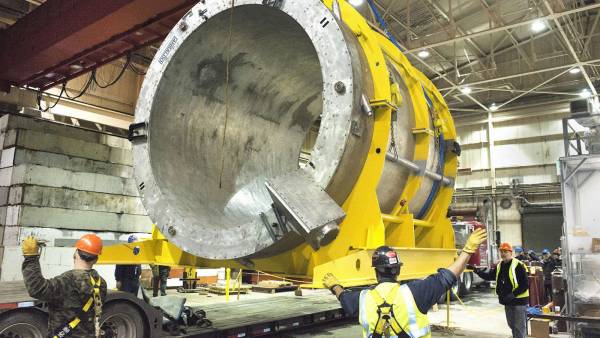Project 8
Project 8A: Austin, we have a snafu
The Artemis 13 is on its way home but before they complete their final landing sequence the team need to launch a top-secret deep space probe. However, power supply for the whole ship is running critically low, so you are now only running the ECS to maintain oxygen in the command module. You have to somehow power up the probe to complete your mission. You no longer have communications with Austin.
You notice as you begin powering up the probe (which operates on its own reserve power system) that although the navigational controls have been primed, there are several components that are not responding to testing. It appears that the circuit switch control board got fried during the test jump, as a result, you now need to create a new circuit that will allow you to provide different amounts of energy to the propulsion system's module on the probe.
That propulsion system consists of the primary burners and the cooling system, which have a total resistance of 65 $\Omega$. The primary burners require a short burst of 200 J to power-up. The cooling system requires a short burst 300 J to power-up.
You need to be able to deliver different amounts of power to this module; however, you are growing concerned that the power supply the probe has access to of 100 V may not be sufficient to power these probe systems. You manage to find some additional batteries onboard (three 10 V batteries from the supply room) to use if you need them.
You also have several 0.125F capacitors and resistors (1 $\Omega$, 5 $\Omega$, 10 $\Omega$, 50 $\Omega$, 100 $\Omega$) on hand. You also have access to multiple switches that can be used to open and close parts of the circuit you are designing.
There is a breaker in the circuit that is a failsafe and will trip if the current exceeds 2 A. You also know that there are delicate circuit elements in the primary burners and the cooling system, so the propulsion system should not be connected to any power supplies when charging capacitors.
You should provide a circuit diagram of your design that helps you explain to your crew that the current in the circuit is safe and that you are going to be able to supply the needed power to the systems when the time comes to launch the probe. As a check for yourself, you should make sure that the voltage in the circuit adds up to the correct amount as to not suffer any voltage shortages.
Learning Goals
- Understand how capacitors charge and discharge
- Use the relationship between capacitance and energy
- Understand what happens when capacitors are in parallel or in series
- Understand how capacitors and resistors combine in a complex circuit
Project 8B: Detecting magnetic fields
An experimental magnetic field detector has been constructed outside of the town of Lakeview. Although the purpose of the detector is largely unknown to the townsfolk of Lakeview you and your team have been recruited to develop a magnetic field detector that is able to detect hawkions. Hawkions are like muons, but are slow-moving and have long lifetimes. They are a newly discovered top secret particle that experiments on the Artemis 13 have indicated should exist. You have a somewhat constructed model, in which the hawkions follow a straight line trajectory, but it looks like there's some pieces of code that the team wasn't sure what to do with. You will need to select a few locations to model the magnetic field due to the hawkions and produce arrows that represent the hawkion's magnetic field. Best hurry, the government needs more information about the hawkions particle before it is too late.
## Scene setup scene.background = color.white ## Parameters and Initial Conditions velocity = vector(1,0,0) ## Objects charge = sphere(pos=vector(-2,0,0), radius=0.1, color=color.blue) xaxis = cylinder(pos=vector(-3,0,0), axis=vector(6,0,0), radius = 0.01, color=color.black) yaxis = cylinder(pos=vector(0,-3,0), axis=vector(0,6,0), radius = 0.01, color=color.black) zaxis = cylinder(pos=vector(0,0,-3), axis=vector(0,0,6), radius = 0.01, color=color.black) ## Calculation Loop t = 0 dt = 0.01 while t < 5: rate(100) charge.pos = charge.pos + velocity*dt t = t + dt ## Not sure what to do with these ##p = sphere(pos=vector(-1,-1,0), radius = 0.1, color=color.cyan) ##Barrow = arrow(color=color.red) ##Barrow.pos = p.pos ##Barrow.axis = vector(0,0,0)
Learning Goals
- Visualize the magnetic field from a single moving charge
- Use the right hand rule to predict the direction of the magnetic field
- Understand how to use a cross product conceptually and mathematically
- Explain the similarities and differences between electric and magnetic fields
